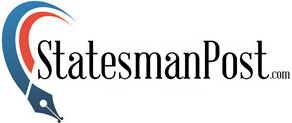
A recent breakthrough in medical diagnostics has seen a machine learning algorithm developed by researchers from Middle Technical University in Iraq and the University of South Australia achieve a remarkable 98% accuracy in detecting diseases, merely by analyzing the color, shape, and thickness of the human tongue. This advancement is not only a significant stride in medical technology but also a nod to ancient Chinese medicine, which has long utilized tongue examination as a diagnostic tool.
The AI model represents the fusion of ancient wisdom with modern technology. The researchers leveraged a dataset of over 9,000 tongue images, training the algorithm to recognize subtle variations in color and texture that correlate with specific diseases. The model was tested on 60 patients in two Middle Eastern teaching hospitals and successfully matched tongue color with the correct diagnosis in nearly all cases. The study highlighted how the AI could accurately identify conditions such as diabetes, stroke, anemia, asthma, liver and gallbladder issues, COVID-19, and various vascular and gastrointestinal diseases.
https://x.com/Dentistry/status/1823705434307301550
The methodology behind this innovative approach is rooted in traditional Chinese medicine, where the appearance of the tongue has been seen as an indicator of overall health for over 2,000 years. By modernizing this practice through AI, the researchers have created a tool that could revolutionize diagnostic methods, making them more accessible, efficient, and non-invasive. For example, a yellow tongue may indicate diabetes, while a deep red tongue could signal a severe case of COVID-19. Similarly, cancer might present as a purple tongue with a thick greasy coating.
The AI's potential extends far beyond its immediate diagnostic capabilities. Co-author Professor Javaan Chahl from UniSA emphasized that the team envisions using this technology in conjunction with smartphones, allowing for real-time health assessments that could be particularly valuable in remote or underserved areas.
https://x.com/aizCircle/status/1823735143233937513
Such an application could democratize healthcare, offering quick and accurate diagnostics to millions worldwide, reducing the burden on healthcare systems, and potentially catching diseases in their early stages.
This development also has significant implications for remote health monitoring, a field that has gained considerable attention since the COVID-19 pandemic. As access to healthcare facilities can be limited during global health crises, technologies like AI-driven tongue analysis could provide a safe, cost-effective, and easy-to-use alternative for continuous health monitoring. The ability to diagnose multiple diseases from a single image, with high accuracy, represents a major advancement in remote healthcare technology.
The researchers are optimistic about the future applications of this technology. They suggest that further refinement and broader data collection could enhance the AI's diagnostic capabilities, potentially allowing it to detect even more diseases with greater accuracy. As it stands, the AI model already provides a secure, efficient, and user-friendly method for disease screening, blending modern technology with centuries-old medical practices.
As this AI technology continues to evolve, it could become an integral part of everyday healthcare. The combination of accessibility through smartphones and high diagnostic accuracy makes it a promising tool for early disease detection, potentially saving countless lives by enabling timely medical intervention. The ongoing research and development in this field underscore the growing role of AI in transforming healthcare, making advanced medical diagnostics more available to the general population.










